
|   |

|   |
Dikshant Samaroh for six young dancers -G.Ulaganathan e-mail: ulag_nath@yahoo.com March 11, 2018 It is really baptism by fire. For the 6 young classical dancers of Nartan School of Classical Dances, Ahmedabad, headed by dancer / guru Smita Shastri, the debut performances on stage were elaborate, and grand but at the same time it was also an acid test. It is almost like someone getting a diksha from the gurus. Three Bharatanatyam dancers - Manaswini Dave, Janhvi Pandya, Venu Ayachit - and three Kuchipudi dancers - Madhura Gondhalekar, Himanshi Vasavda and Anushka Iyer - almost all of them in schools were initiated into the big world of dance after carefully nurturing them for over 7 years, last month by Smita Shastri and her team of teachers. 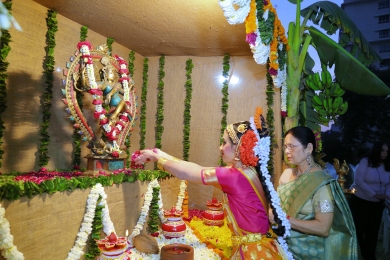
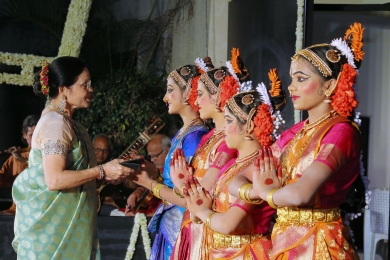
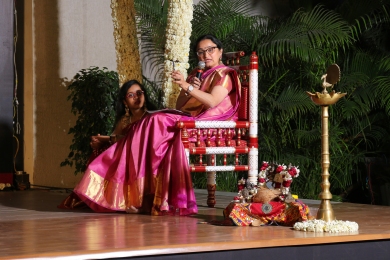
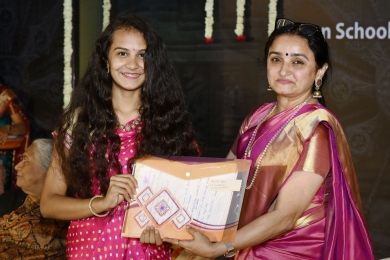
This year's event saw almost the who's who of Ahmedabad's dance scene. Among those present were the legendary Kathak choreographer Kumudini Lakhia, seniormost Bharatanatyam guru in Gujarat, Guru Elakshi Thakore and Soorya Krishnamurthy from Thiruvananthapuram. At the Samaroh, students who graduated in October 2016 were presented with the certificates and prizes they won by participating in annual competitions held at Pune, Shimla, Bhilai, Mumbai, Kolkata, Shirdi and Ahmedabad throughout the year. The 2016 batch that was presented with many certificates included Ameya Naik, Dhruva Togadia, Khushi Patel, Misri Shah, Prashita Surana, Krina Leuva and Palak Jain. They had participated in the World Congress of Dance at Mumbai and at the 5th Kuchipudi convention in Vijayawada. Generally it is said in Gujarat after their arangetram, girls are not encouraged to continue to dance. But Nartan encourages them to participate in various events by convincing their parents and taking them along. Nartan is different, says Smita Shastri. Nartan works on a completely different level and hence can be considered as a unique dance school. Admission of students at Nartan is based on not only students' passion and commitment to dance but also parents' love for classical dance. Nartan follows seven-year curriculum which includes the training of various aspects like all adavus, tala, laya, mudras, expression, music, kriti, shashtra and katha which is included in Margam in dance form. Instead of using the term ‘arangetram,' after completing seven years of dance training, students are awarded the title ‘Nritya Tirth' by Nartan. Dikshant Samaroh takes place in an open air theatre. A temple of Lord Nataraja is erected within the premises and a procession is organized with a view to inviting Lord Nataraja himself using various mantras and musical instruments. It was amazing to see all seats filled up - the theatre accommodates around 2000 people. There is a Kalaguru seated on stage and this time it was Dr. Sandhya Purechha from Mumbai. The dancers, called Diksharthis, get an opportunity to perform items carefully chosen by the Kalaguru. The program proceeds according to the wish of the Kalaguru. She has the right to choose students who are to perform particular items. She also can question the students on the theoretical and practical aspects of dance. This entire procedure is carried out in presence of an invited audience and the dancers have to satisfy both the Kalaguru and their Guru Smita Shastri,who leads the orchestra and watches from the wings. It is a different kind of examination and was a delight to see each of the dancers coming out with flying colours. 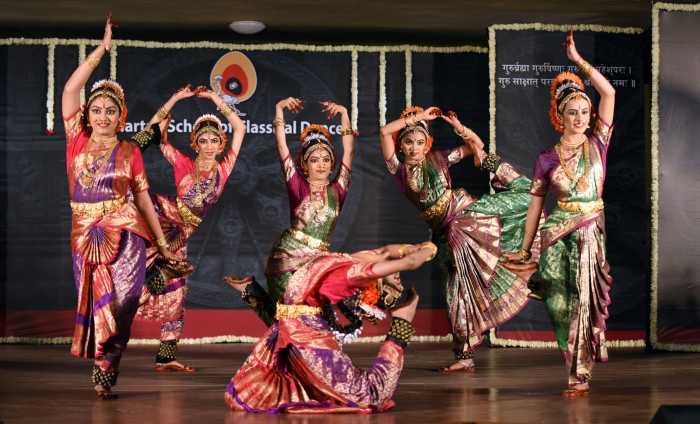 The repertoire included traditional items like Pushpanjali, Alaripu, Jatiswaram, Dashavatara Shabdam, Balagopala Tarangam, Manduka Shabdam, the traditional Thillana and an elaborate varnam. After each item, the Kalaguru offers her comments, explains the significance of the item and also offers valuable tips to the young artistes. The show goes on till late in the night and then the parents are called on stage, felicitated and even given an opportunity to speak. At the Samaroh every small detail is to be taken care of by the Diksharthis. This includes getting the legal permit for the venue, ticket arrangements for outstation musicians, guests and logistics, etc. This helps them to get used to organizing an event as well, says Smita. In nearly 40 years, Nartan has seen more than 200 students graduating. Today many of the students of Nartan have started their own institutions worldwide. G. Ulaganathan is a senior writer and journalist based in Bangalore. |